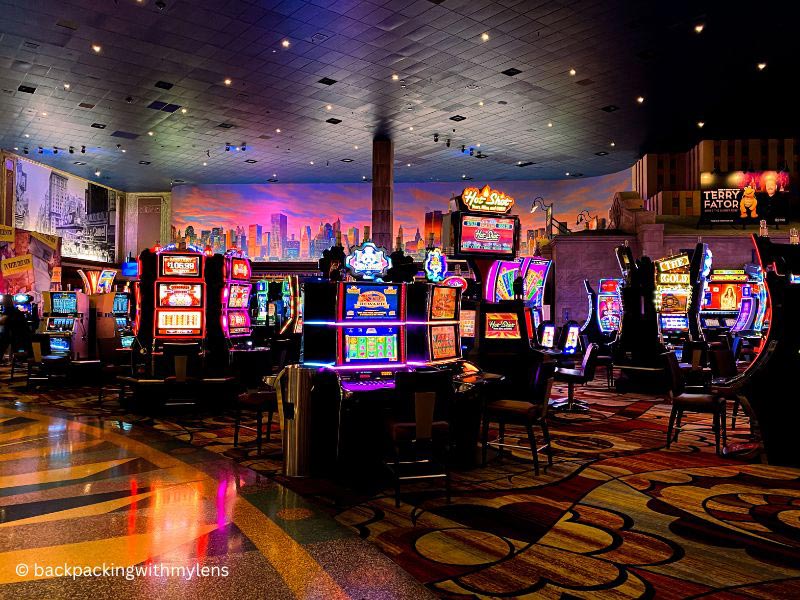
Gambling games have captivated for years a wide range of players, offering not only excitement through chance but also a distinct experience crafted for various kinds of players. From the strategic minds who thrive on strategic thinking to recreational players in search of entertainment, casinos recognize the subtleties of their audience and design games that cater to these differing interests.
In investigating the world of casino games, we discover a variety of game types that attract all types of players. Poker tables with high stakes attract those who are competitive, while exciting slot machines attract individuals in search of quick rewards. Whether it’s the allure of winning big or simply savoring the community feeling, casinos design their game offerings to ensure that all players find a place where they feel comfortable and engaged. Understanding how these games are tailored to various player types can enhance not only our understanding of them but also our method for choosing which games to play.
Comprehending Gamer Groups
In the diverse world of casino entertainment, gamers can be grouped into separate types based on their drives and choices. These gamer types range from the laid-back and community-oriented gamers, who enjoy the fun value and interactive engagements that gambling provides, to the more strategic and calculated players, who seek to boost their odds and gains. Understanding these various player types is essential for casinos to adapt their offerings and create engaging experiences.
One common category is the social player, who views casino games as a form of group interaction and enjoyment rather than a serious gambling endeavor. These participants often enjoy games that encourage engagement and camaraderie, such as blackjack. Their attention is on the experience rather than the outcome, so lively atmospheres and shared moments are what they value the most.
On the opposite end of the range, strategic players are driven by contest and the pursuit of ability. They tend to gravitate toward games that require decision-making and strategy, such as poker, where their abilities can influence the result. This kind often interacts with the games on a more intense level, utilizing expertise and strategies to secure an edge. Comprehending these drives allows casinos to design environments and game selections that suit to each gamer’s individual likings.
Game Design Strategies
Casino games are designed with diverse player types in mind, utilizing multiple strategies to draw in and engage them. For casual players, the focus is on ease and ease of understanding. Games like slot machines are often aesthetically pleasing with straightforward mechanics. Truy Cập Ngay This allows players to experience the experience without a steep learning curve, fostering an welcoming atmosphere. The bright colors, engaging audio, and themes create a playful environment where players can easily get immersed and enjoying themselves.
For strategic players who enjoy a more profound level of engagement, games such as poker and 21 offer depth and skill-based elements. These games feature strategy and decision-making, appealing to players who excel on competition and want to exercise their cognitive abilities. The design of these games regularly includes complex rules and mechanics that challenge players to refine their skills and develop strategies over time, resulting in a rewarding experience for those who appreciate perfecting the game.
Furthermore, community-oriented players are considered through games that emphasize engagement and community. This includes live casino options and multiplayer games, which foster a sense of community among players. The design of these games typically incorporates communication tools and communal aspects, allowing players to connect and share experiences. By building an environment where participation is encouraged, casinos can effectively involve social players, making the gaming adventure more pleasurable and memorable.
Boosting Participant Satisfaction
Gambling titles have progressed notably to create a significantly engaging experience for players. Application designers focus on high-quality images, immersive sound effects, and innovative gameplay mechanics that draw players into the gaming space. By employing tech, such as immersive technology and AR, casinos ensure that participants feel as if they are part of a thrilling environment, enhancing in addition to the enjoyment of the games but also the overall satisfaction of being in a casino.
Community engagement is another critical factor in enhancing participant satisfaction in casino games. Numerous options are designed to promote communication among players, whether through multiplayer formats or social tools. This social aspect is attractive to participants who like communicating with fellow players while competing, fostering a feeling of community. In addition, interactive elements can consist of scoreboards, competitions, and incentives for team gaming, which engage ambitious players and inspire them to return for further.
Lastly, personalization plays a crucial role in tailoring the interaction for various player types. Gaming establishments and title creators analyze participant habits and tastes to present tailored game options and benefits. By grasping the distinct tastes of participants, gaming establishments can present tailored promotions, incentives, and new game releases that resonate with each gamer, thus boosting their overall satisfaction and commitment to the gaming venue.